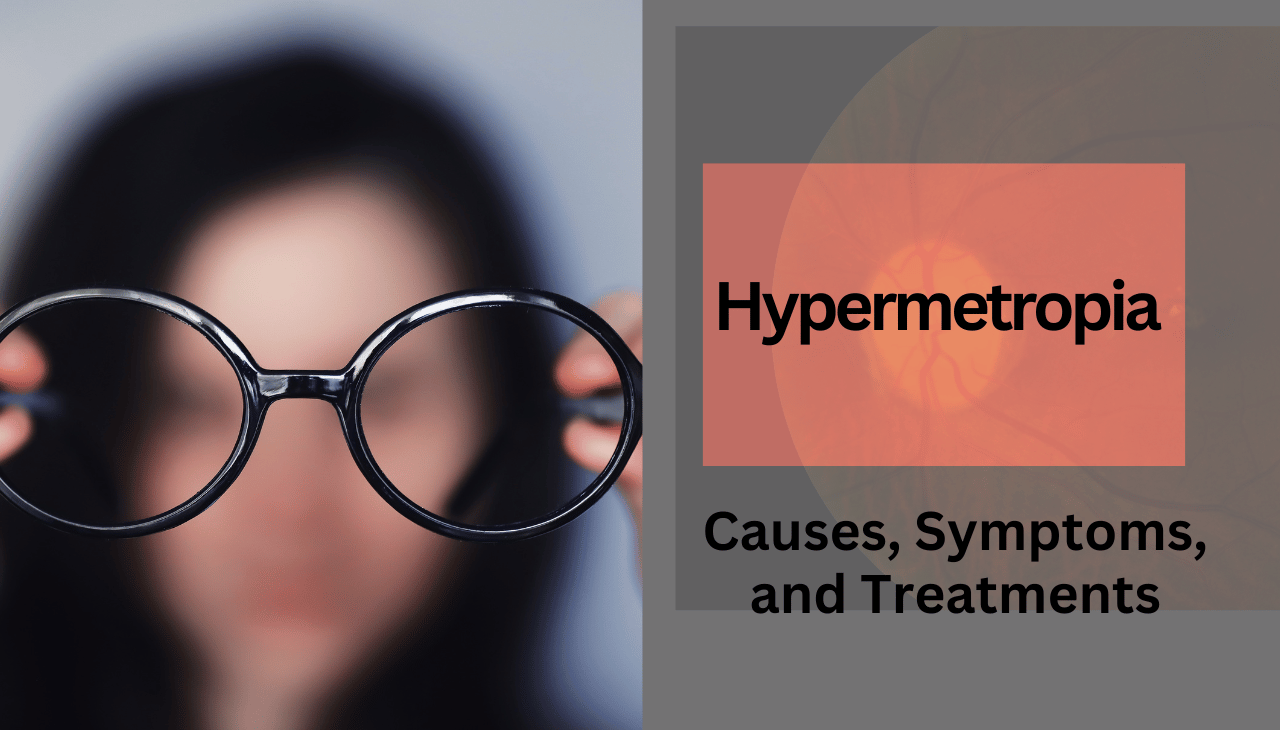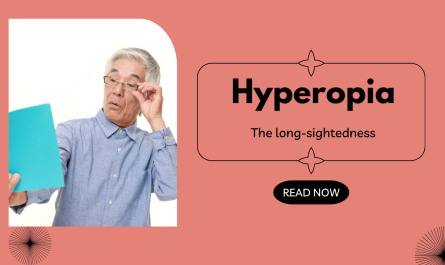Introduction
Hypermetropia, commonly known as farsightedness or hyperopia, is a prevalent vision condition affecting millions worldwide. People with hypermetropia struggle to see nearby objects clearly, while distant vision often remains sharp. This refractive error occurs when the eye focuses images behind the retina instead of directly on it, causing blurred near vision.
Understanding hypermetropia—its causes, symptoms, and treatment options—is essential for maintaining healthy eyesight and preventing complications such as eye strain or headaches. In this comprehensive guide, we will explore everything you need to know about hypermetropia and how it can be managed effectively.
What is Hypermetropia?

Hypermetropia is a type of refractive error in which the eye cannot focus light correctly on the retina, the light-sensitive layer at the back of the eye. This causes difficulty in seeing objects that are close clearly, while distant objects may appear normal or less affected.
How Does Vision Normally Work?
To understand hypermetropia, it’s important to grasp how vision works. Light rays enter the eye through the cornea and lens, which focus the light onto the retina. The retina converts light signals into nerve impulses that travel to the brain, producing the images we see.
In hypermetropia, the eye’s shape or focusing power causes light to focus behind the retina, resulting in blurred vision for near objects.
Causes of Hypermetropia
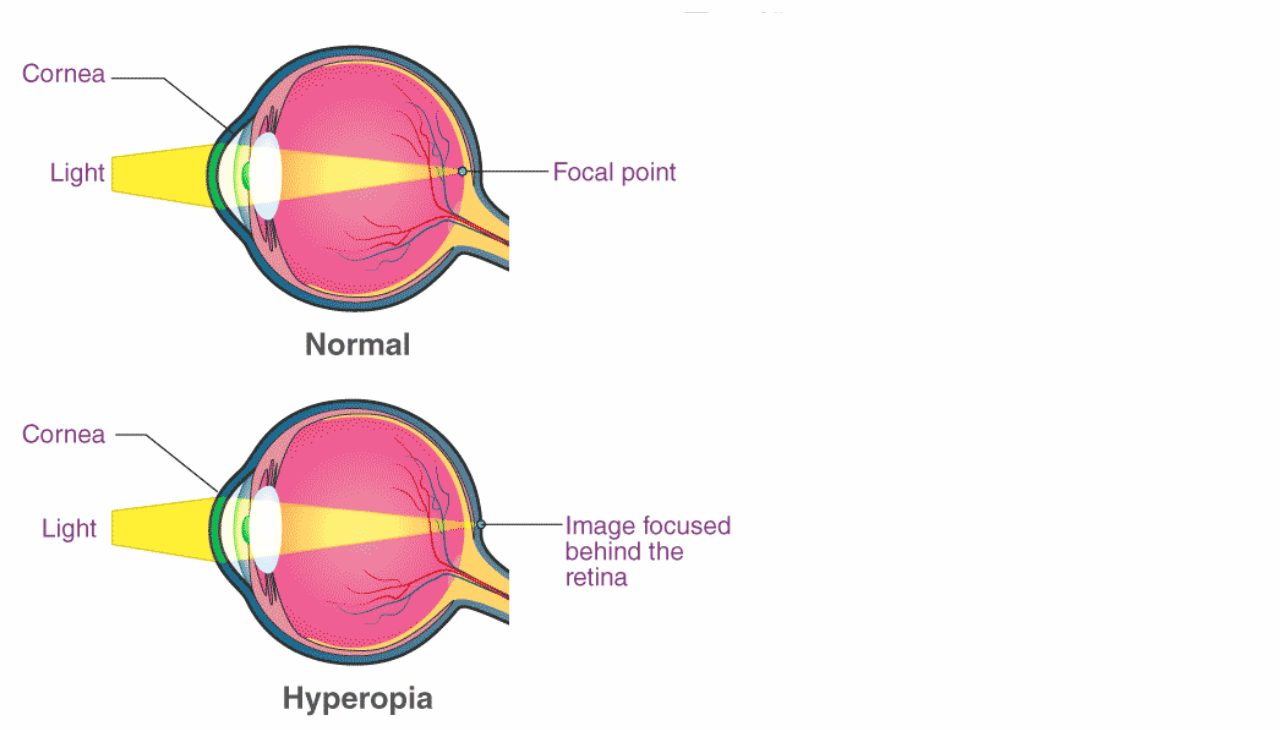
Several factors can cause or contribute to the development of hypermetropia, including:
1. Eye Shape and Length
- Shorter eyeball length: The most common cause is an eyeball that is shorter than normal from front to back, so the light doesn’t reach the retina properly.
- Flattened cornea or lens: Sometimes the curvature of the cornea or lens is not steep enough to focus light correctly.
2. Age-related Changes
- Presbyopia: Though different from hypermetropia, presbyopia—age-related loss of lens flexibility—can worsen farsightedness, especially after age 40.
3. Genetic Factors
- Hypermetropia often runs in families, suggesting a hereditary predisposition.
4. Childhood Development
- Many children are born with mild hypermetropia that improves as the eye grows and develops during childhood.
Symptoms of Hypermetropia
The symptoms of hypermetropia can vary depending on the severity of the condition and the person’s age. Common signs include:
1. Blurred Near Vision
Difficulty focusing on close objects like books, screens, or small text.
2. Eye Strain and Fatigue
Constant effort to focus on near tasks can cause discomfort and tiredness in the eyes.
3. Headaches
Frequent headaches, especially after reading or prolonged close work, are common.
4. Squinting
People may squint to improve focus and temporarily reduce blurriness.
5. Difficulty with Reading or Close Work
Tasks requiring near focus, such as sewing or using a smartphone, become challenging.
6. Eye Discomfort or Burning
Irritation or dryness due to eye strain.
Diagnosing Hypermetropia
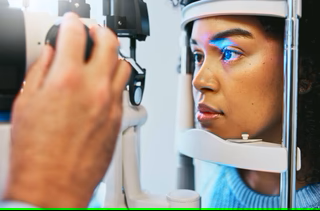
A comprehensive eye examination by an optometrist or ophthalmologist is essential to diagnose hypermetropia accurately. The process includes:
1. Visual Acuity Test
Measures clarity of vision at various distances.
2. Refraction Test
Using lenses to determine the appropriate prescription to correct vision.
3. Retinoscopy
A technique to observe the reflection of light from the retina.
4. Comprehensive Eye Exam
Checks overall eye health to rule out other conditions.
Treatment Options for Hypermetropia
Fortunately, hypermetropia is easily correctable with several treatment options depending on age, severity, lifestyle, and preference.
1. Eyeglasses
The simplest and most common treatment. Convex (plus) lenses help focus light directly onto the retina, improving near vision.
Benefits:
- Non-invasive
- Easily adjustable
- Corrects vision immediately
2. Contact Lenses
Contacts provide a wider field of vision and are cosmetically preferred by many.
Types:
- Soft lenses
- Rigid gas-permeable lenses
- Daily, weekly, or monthly disposables
Considerations:
- Proper hygiene is essential
- May cause dryness or irritation in some users
3. Refractive Surgery
Surgical options reshape the cornea to improve focusing power.
Common Procedures:
- LASIK (Laser-Assisted In Situ Keratomileusis)
- PRK (Photorefractive Keratectomy)
- LASEK (Laser Epithelial Keratomileusis)
Who is eligible?
- Adults with stable prescriptions
- No significant eye disease
- Adequate corneal thickness
4. Lens Implants (Intraocular Lenses)
Used in cases where surgery is needed or for patients with cataracts and hypermetropia.
Lifestyle Tips for Managing Hypermetropia
Besides corrective lenses or surgery, certain habits can reduce eye strain and improve comfort:
- Take frequent breaks during near work (the 20-20-20 rule: every 20 minutes, look at something 20 feet away for 20 seconds).
- Maintain good lighting while reading or working.
- Blink often to keep eyes moist.
- Use artificial tears if eyes feel dry.
- Maintain regular eye check-ups to monitor vision changes.
When to See an Eye Doctor
It’s important to consult an eye care professional if you notice:
- Persistent blurred vision
- Frequent headaches after near work
- Eye discomfort or redness
- Sudden vision changes
- Difficulty focusing on close objects affecting daily activities
Early detection and treatment can prevent complications such as worsening eye strain or amblyopia (lazy eye) in children.
Hypermetropia vs. Other Vision Problems
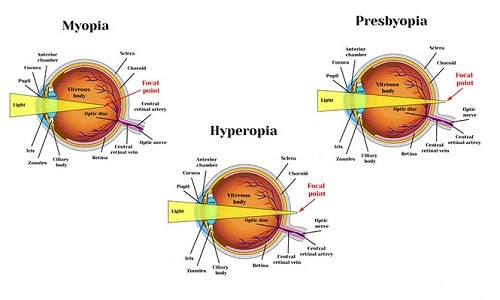
Understanding the difference between hypermetropia and similar conditions helps in recognizing the correct treatment:
| Condition | Vision Problem | Typical Age Group |
| Hypermetropia | Blurred near vision, distant vision clearer | Any age; often congenital |
| Myopia (Nearsightedness) | Blurred distant vision, clear near vision | Childhood to adulthood |
| Presbyopia | Difficulty focusing on near objects due to aging lens | Typically over 40 years |
Laxmi Eye Hospital is one of the largest chains of eye hospitals in Mumbai. With over 30 years of experience, it is known for its transparent treatment approach and skilled eye doctors. The hospital offers advanced diagnostics and eye care services across Panvel, Kharghar, Kamothe, and Dombivli. Whether it is Cataract, Lasik, Glaucoma, or Retina treatment, Laxmi Eye Institute provides comprehensive eye care at affordable costs.
FAQs About Hypermetropia
Can children outgrow hypermetropia?
Yes, many children are born farsighted and gradually develop normal vision as their eyes grow, but regular check-ups are necessary.
Is hypermetropia hereditary?
Genetics can play a role, but environmental factors also contribute.
Can hypermetropia cause headaches?
Yes, eye strain from focusing efforts often leads to headaches, especially after close work.
Does hypermetropia worsen with age?
In some cases, it can worsen, especially if presbyopia develops.
Can hypermetropia be cured?
While it cannot be “cured,” it can be effectively managed with glasses, contact lenses, or surgery.
Conclusion
Hypermetropia is a common and manageable eye condition that affects the ability to see nearby objects clearly. Recognizing the symptoms early and seeking professional diagnosis can prevent discomfort and improve quality of life. Whether through corrective lenses or surgical options, effective treatments exist to restore clear vision and reduce eye strain.
Regular eye examinations and adopting good eye care habits are essential steps toward maintaining healthy vision. If you experience blurred near vision, headaches, or eye fatigue, consult an eye care specialist to discuss appropriate evaluation and treatment.

